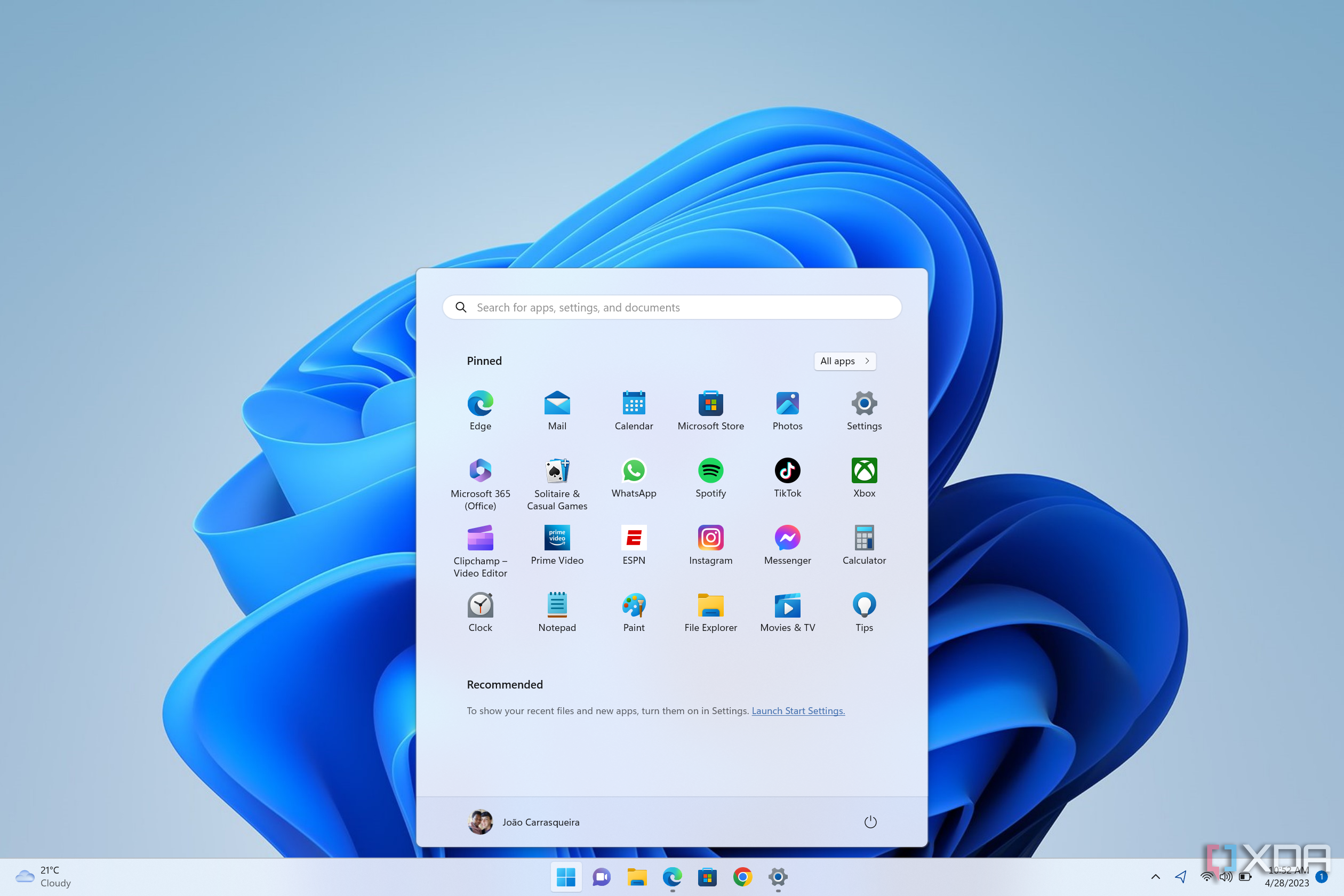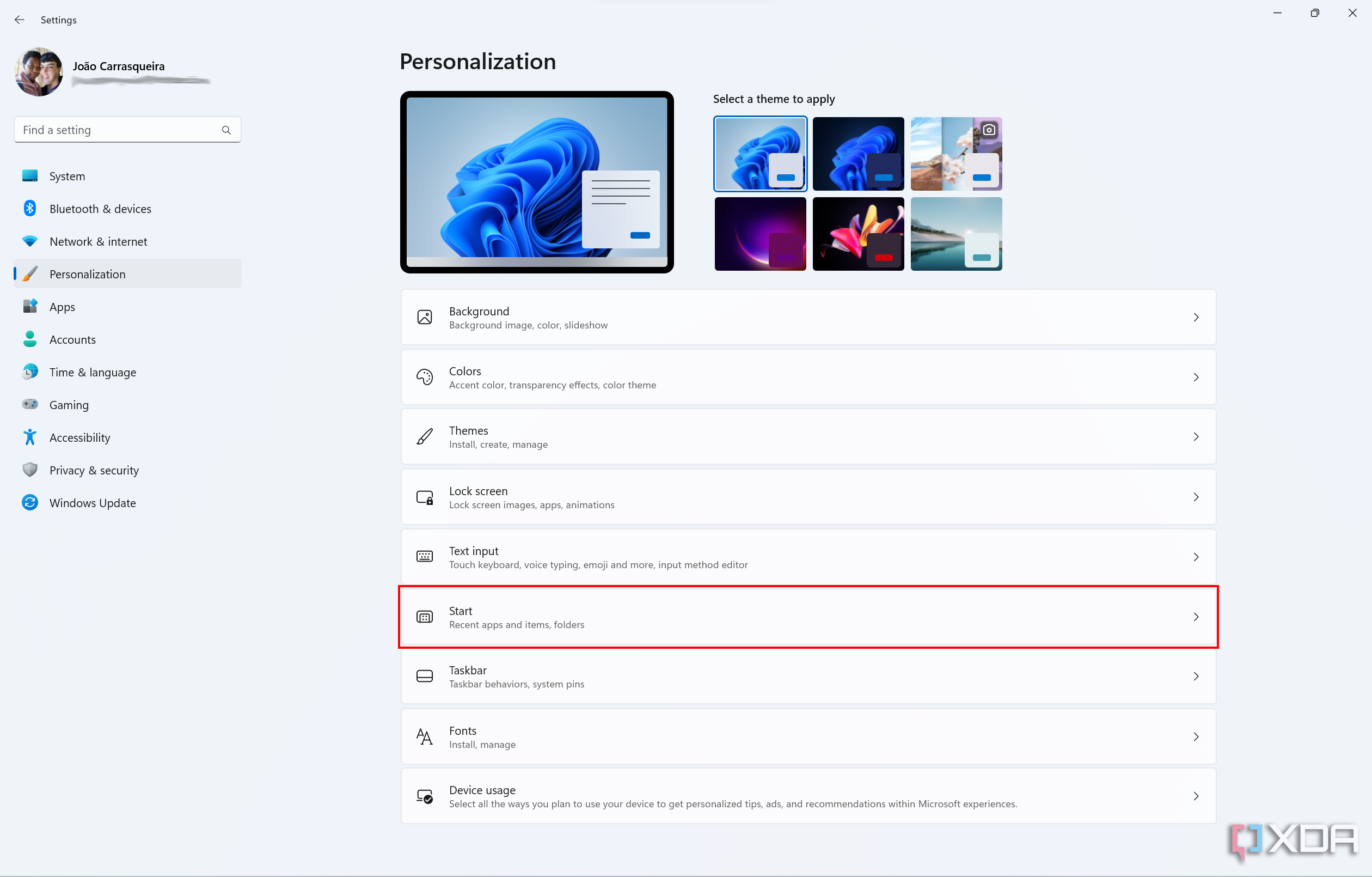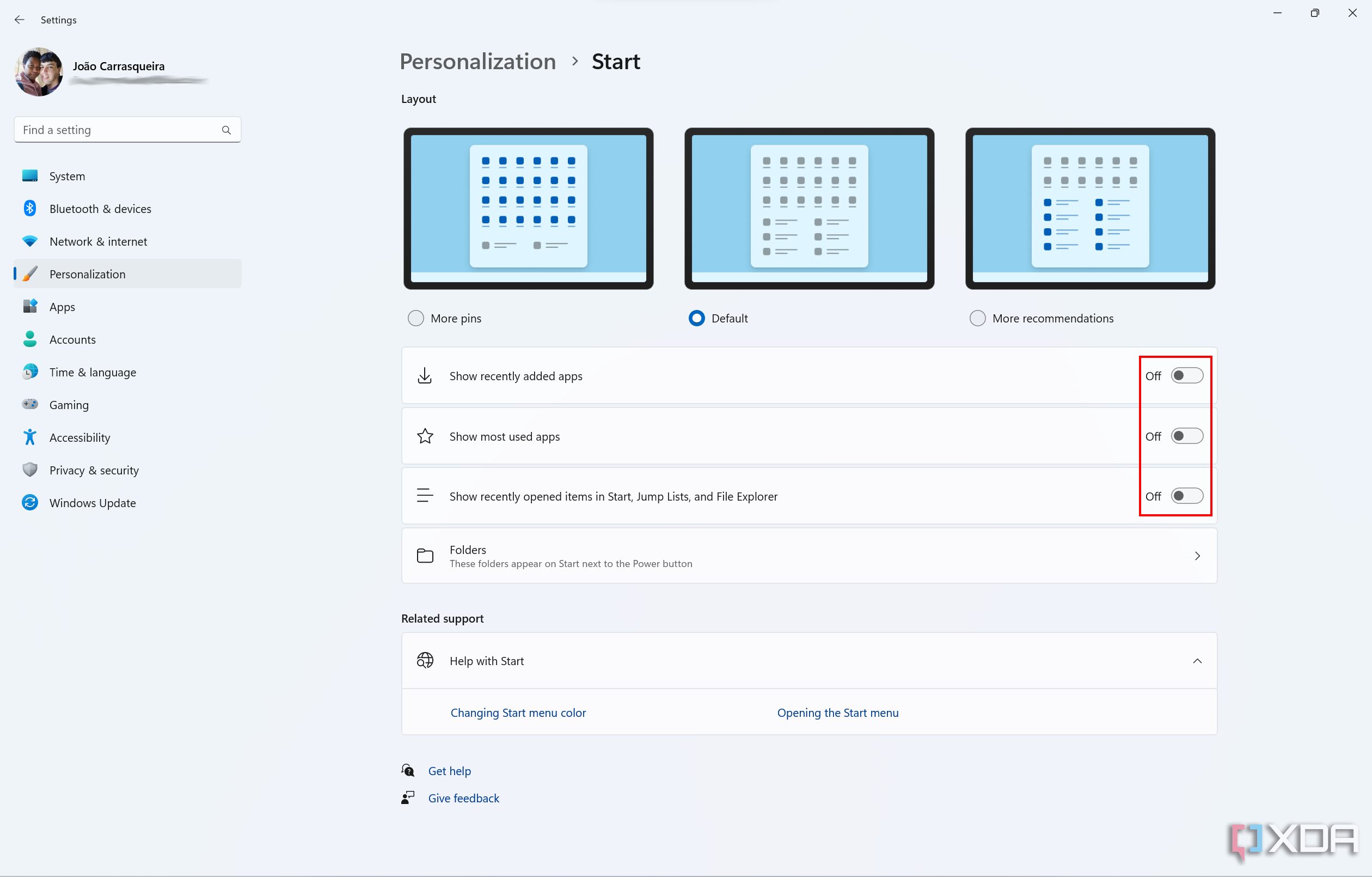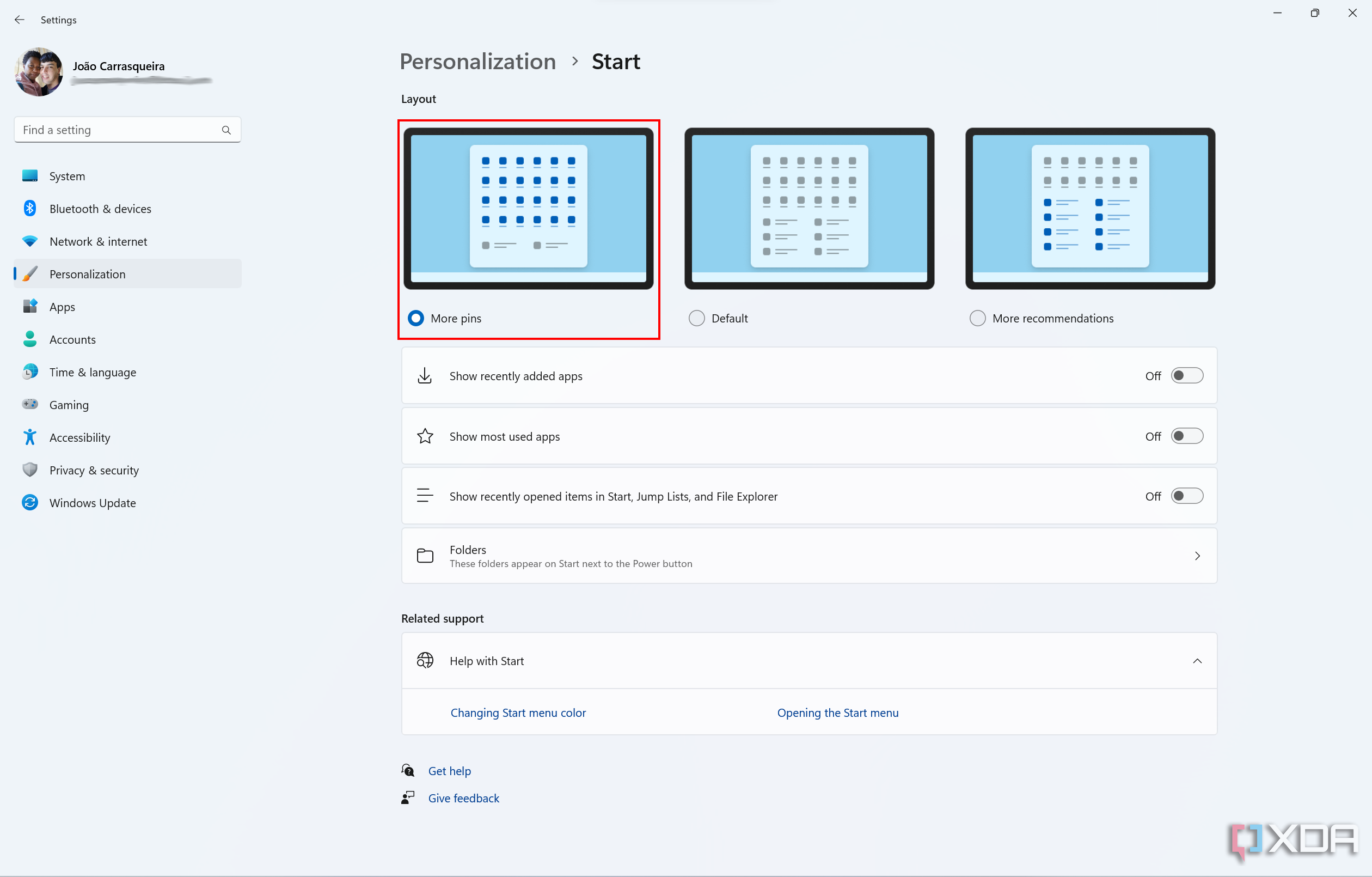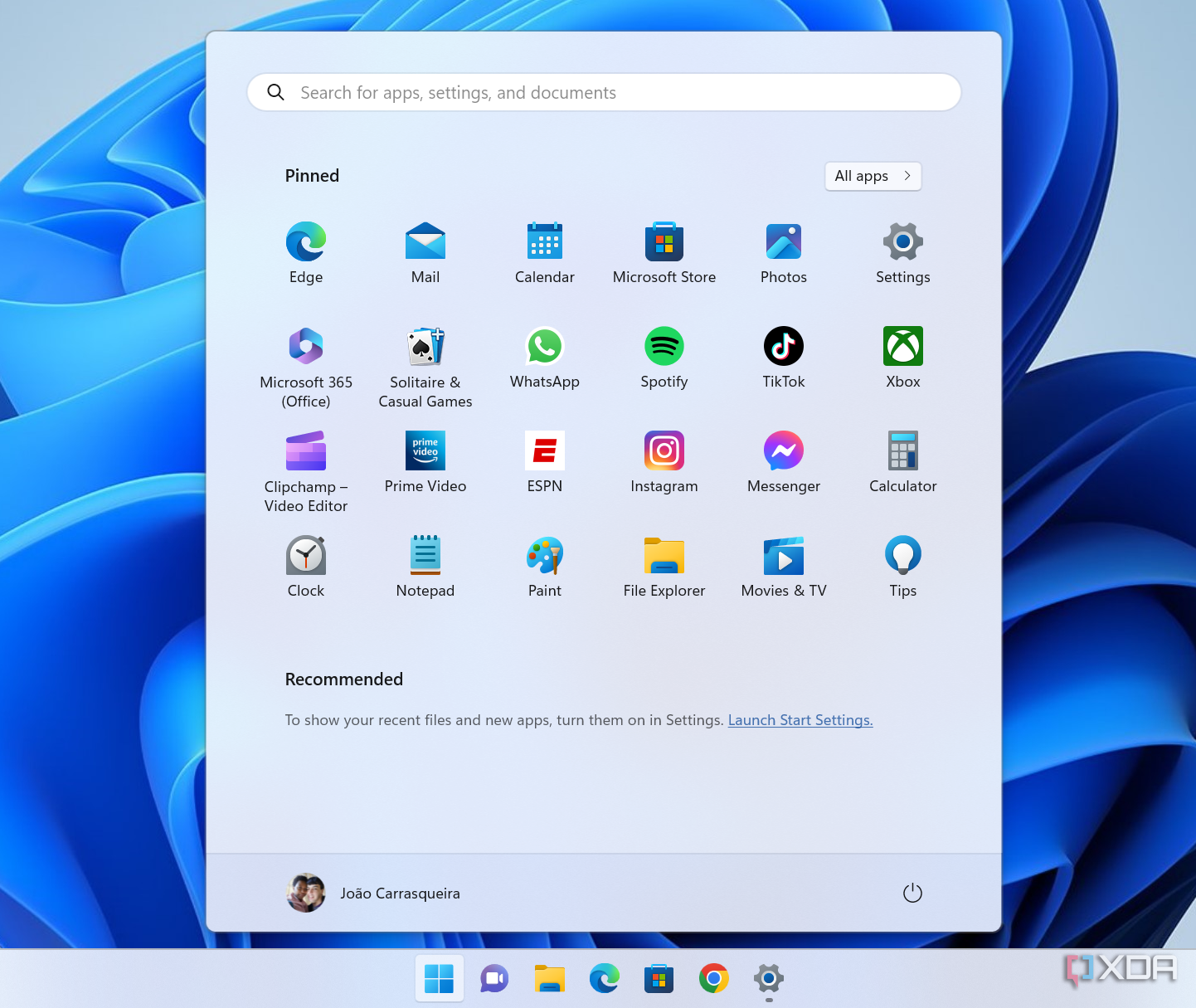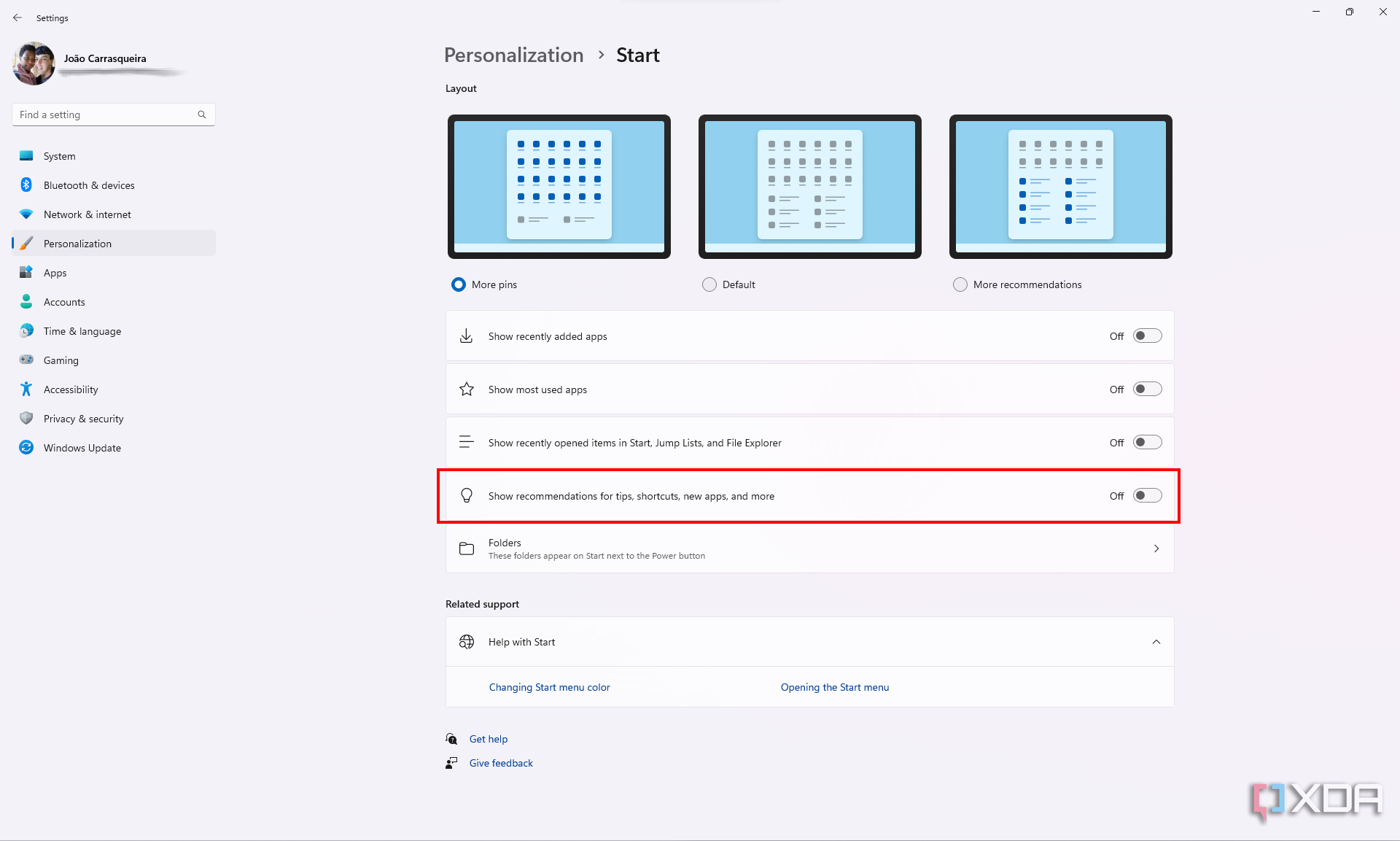Windows 11 introduced a ton of new features, some of which we like, and some that we don't. One of the biggest component changes, and one of the most divisive, is the new Start menu. Windows 11 has replaced live tiles with simple icons, but perhaps most importantly, there's now a Recommended section taking up half the space on the Start menu.
It consists mostly of two things: Recently created/downloaded files and recently installed apps. For some enterprise users, it can also include recommendations for relevant files on the company's network. It's meant to make relevant content more easily accessible, but it can also make sensitive information that much easier to find. Or maybe you'd rather see more of the apps you choose instead of a random assortment. So what can you do if you want to hide this recommended content from the Start menu in Windows 11? It is possible, though unfortunately, it won't get you any extra space on the Start menu. Here's what you need to know.
How to hide recommended content in the Start menu
If you don't want your latest files and apps to show up directly on the Start menu, you can make it so that recommended content isn't displayed. However, it's a half solution, because while the content itself is removed, you'll still have the Recommended section taking up space, it will just be empty. Still, if that's what you want, here's how to do it:
- Open the Settings app, and choose Personalization from the left-side menu.
-
Click Start.
-
Here, you'll see three toggles, and you'll want to set them all to Off if you don't want to see any recommended content:
- Show recently added apps (on by default): Enables or disables recommendations for apps you recently installed on your PC.
- Show most used apps (off by default): Enables or disables recommendations for the apps you open most frequently
- Show recently opened items in Start, Jump Lists, and File Explorer (on by default): Enables or disables recommendations for documents and images you've recently opened or created. Disabling this also removes the Recent section on the Home page of File Explorer.
-
(Optional) Under Layout (at the top of the page), choose More pins to reduce the size of the Recommended section.
It's impossible to remove the Recommended section completely, even if you disable all the recommended content. This step lets you make it smaller, however.
-
Your Start Menu will now show no recommended content, and you'll have more space for pinned items.
As we've mentioned, it's unfortunately impossible to remove the Recommended section entirely, but if you just don't want to see that content, at least there's a way. Unfortunately, Microsoft is also using some sneaky tactics to tempt you to leave these options on. Disabling recent items on the Start menu also affects the File Explorer and Jump Lists, so if you don't want to lose that quick access everywhere, you also need to leave it enabled for the Start menu.
If you're a Windows Insider, you'll see a fourth toggle on the page above for recommended tips, shortcuts, new apps, and more. Essentially, these are promotional recommendations for all kinds of content that isn't actually on your PC. This should be available for all users in the next few months, and you'll want to disable it, too.
If you're looking to tweak other settings, check out how to change the default browser in Windows 11. If you're looking for something a little less known, we also have a guide on how to enable God Mode in Windows 11.

